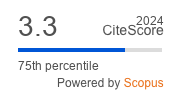Article | Open Access
Dimensions of Social Equality in Paid Parental Leave Policy Design: Comparing Australia and Japan
| Views: | 4306 | | | Downloads: | 2632 |
Abstract: Paid parental leave policies in both Australia and Japan fit within Dobrotić and Blum’s (2020) classification of a selective employment-based entitlement model, thus offering an extension of that category beyond Europe and illustrating the wide variation possible within it. In this article we develop indices for comparing employment-based parental leave policies on three dimensions of social equality: inclusion, gender equality and redistribution. This combination offers an extension of classificatory schemes for parental leave policies and a broader basis for comparative analysis. We compare Australia and Japan on these indices and present a qualitative exploration of the origins and implications of their similarities and differences. The analysis draws attention to tensions between the three indices, illustrating intersecting and conflicting influences on the potential for paid parental leave entitlements to contribute to the amelioration of social inequalities. Overall, the comparison highlights drivers of difference within employment-based entitlement systems and underlines the need for complementary measures to advance egalitarian outcomes.
Keywords: Australia; gender equality; inclusion; Japan; leave policy design; paid parental leave; redistribution; social equality
Supplementary Files:
Published:
© Gillian Whitehouse, Hideki Nakazato. This is an open access article distributed under the terms of the Creative Commons Attribution 4.0 license (http://creativecommons.org/licenses/by/4.0), which permits any use, distribution, and reproduction of the work without further permission provided the original author(s) and source are credited.


